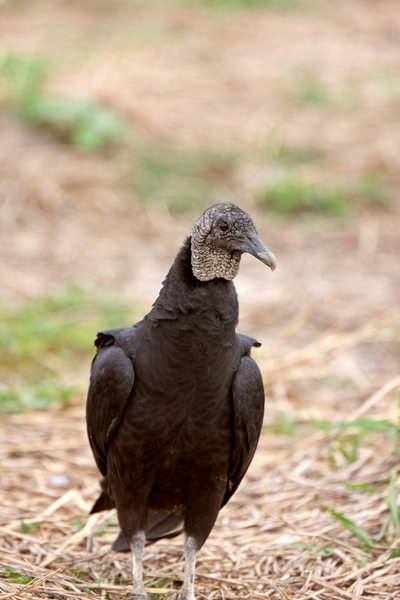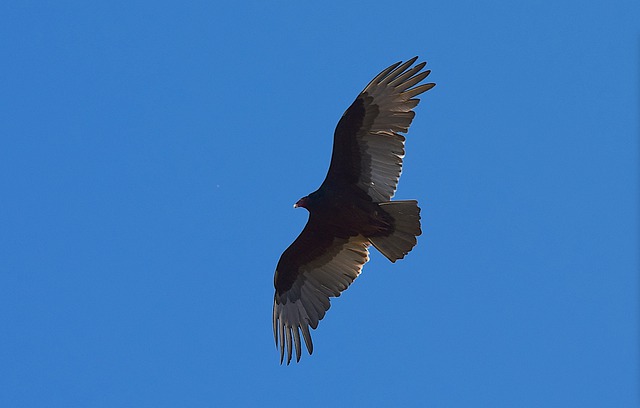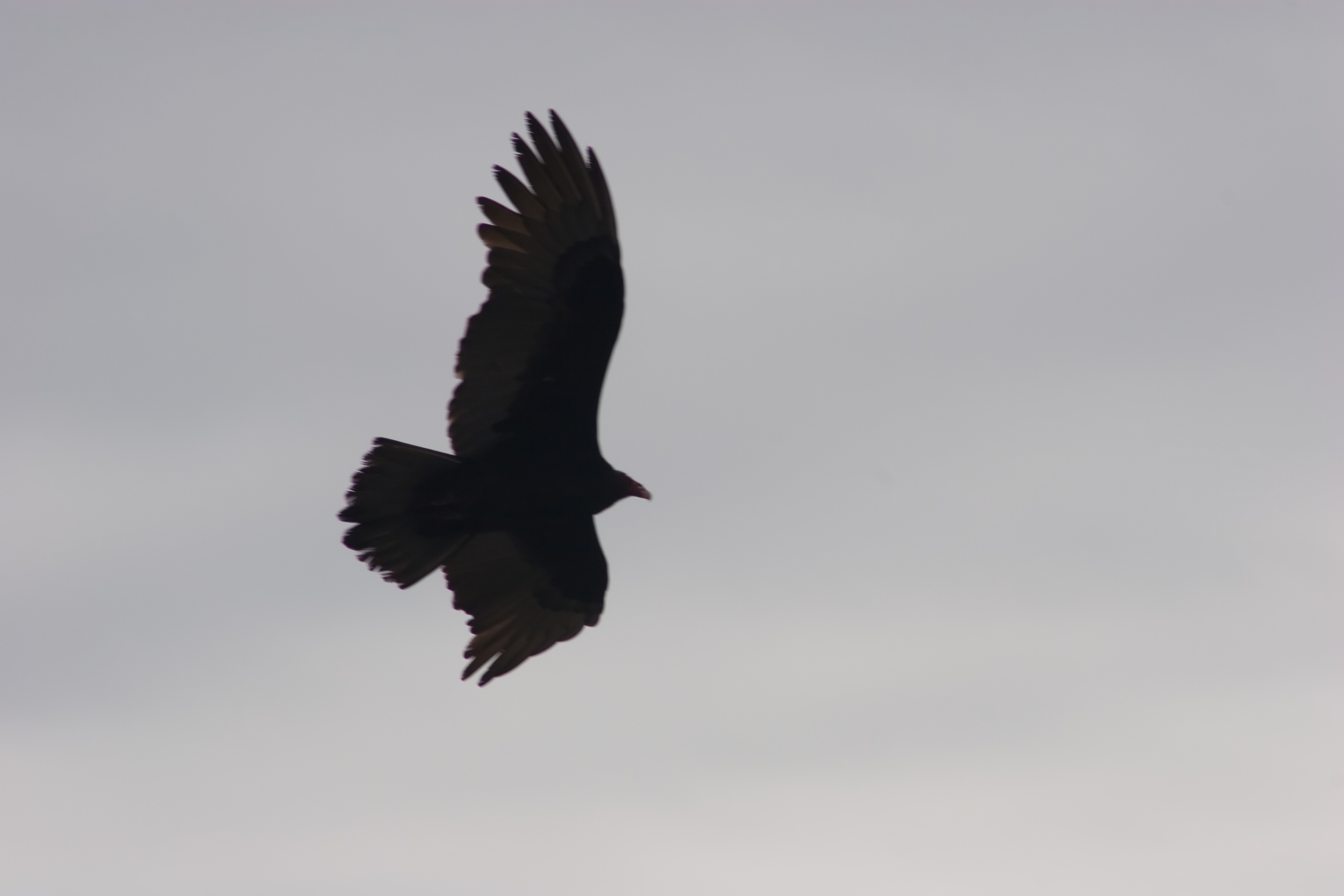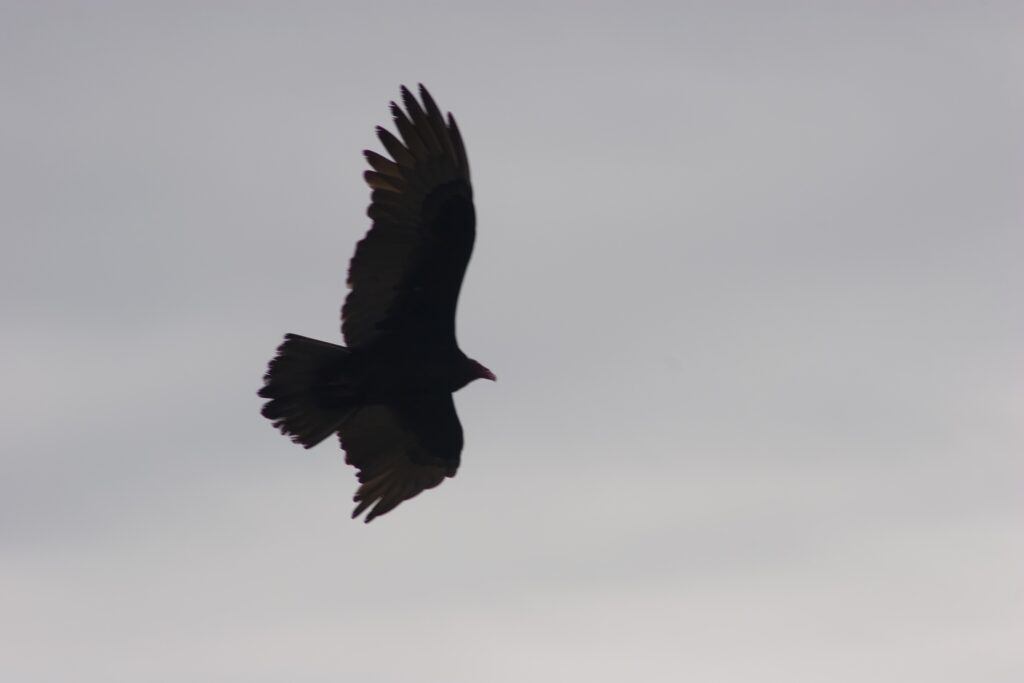Numerous bird species in North America use dead animals as food. The Crested Caracara and the Bald Eagle spring to mind.
The vultures, however, are the most well-known carrion eaters.
In North America, vultures come in three different species.
| Image | Name |
|---|---|
 | Black Vulture |
 | Turkey Vulture |
 | California Condor |
Types of Vultures in America
1. Black Vulture

Black vultures are also known as Coragyps atratus.
The average weight of a Black vulture is 1.6 to 3 kg, and the length of the wing span is 1.33 – 1.67 m. Black Vultures possess a slightly slimmer body and significantly smaller wingspan.
They frequently soar and roost in flocks, just like Turkey Vultures. They soar to great heights because they rely on sight to find corpses.
Black Vultures have a big white spot at the tip of their wings in contrast to their dark grey blackheads. The patch is noticeable when viewed from below since the body and wings are otherwise black.
The only difference between juvenile and adult Black Vultures is that adults have grayer heads. Year-round, Black Vultures may be seen throughout the Southeast U.S., as far north as New Brunswick all along East Coast, and as far west as southern Louisiana, Texas, far south-central Arizona, and a large portion of Mexico.
2. Turkey Vulture

The scientific name of the Turkey vulture is Cathartes aura. Turkey vulture weighs almost 3 pounds with an average length of 32 inches and a wing span is nearly 6 feet.
The most common vulture in North America is the turkey vulture. They are the only animals that can locate food by smell. They are able to find carrion when other animals cannot because of their aptitude.
According to research, turkey vultures can locate dead chickens that have been concealed on the forest floor. On rare occasions, turkey vultures will hunt live creatures, including herons that are nesting.
Appearance
Both sexes of adult Turkey Vultures have a little, bare redhead. Their bodies, as well as forewings, are black when viewed from underneath. The wings are mostly grey in appearance. Silvery wingtips are present. These birds seem evenly dark to brownish-gray when viewed from above.
Young Turkey Vultures also have greyish heads during their first year. As a result, when perched, they may have been confused for Black Vultures for a few months.
The range of turkey vultures extends into southern Canada from the United States and Mexico. They frequently fly in small or huge columns together. They nest together as well.
3. California Condor

California condors have returned to the wild after almost going extinct. Their range is still rather constrained. Small populations can be found in Southern California, northern Baja California, and Arizona surrounding the Grand Canyon.
Only human intervention saved this gigantic bird from extinction (wingspan: 109 inches).
Due to their size and capacity to glide stably over great distances, condors can be mistaken for tiny airplanes from a distance.
Appearance
Contrary to other vultures in North America, California condors exhibit significant variance between young and adults.
In flying, juveniles have dark gray wings with occasional light gray spots on them.
In the third year, their heads become pink, and by the fifth summer, they are orange. When looking at an adult from below, the wings exhibit noticeable white spots. They have orange heads.
They are dark gray to black when viewed from above. The wings have thin white stripes with lighter gray backgrounds.
The head of California condors becomes a bright red pink-while they are courting. The birds’ coloration also changes as they become frightened.
Conclusion
Vultures are one of the most renowned carrion eaters in North America. These creatures tend to fly on greater heights to get a good vision of the area as they rely on corpses.
They are very proficient when it comes to searching for food just by smelling it due to this exceptional trait. They are able to find carrion when other animals cannot. They also have variations when it comes to their appearances.
FAQ
What is the scientific name for the black vulture?
The scientific name for the black vulture is Coragyps atratus.
What is the most common vulture in North America?
The most common vulture in North America is the Turkey vulture.
Last Updated on March 22, 2023 by Lily Aldrin
